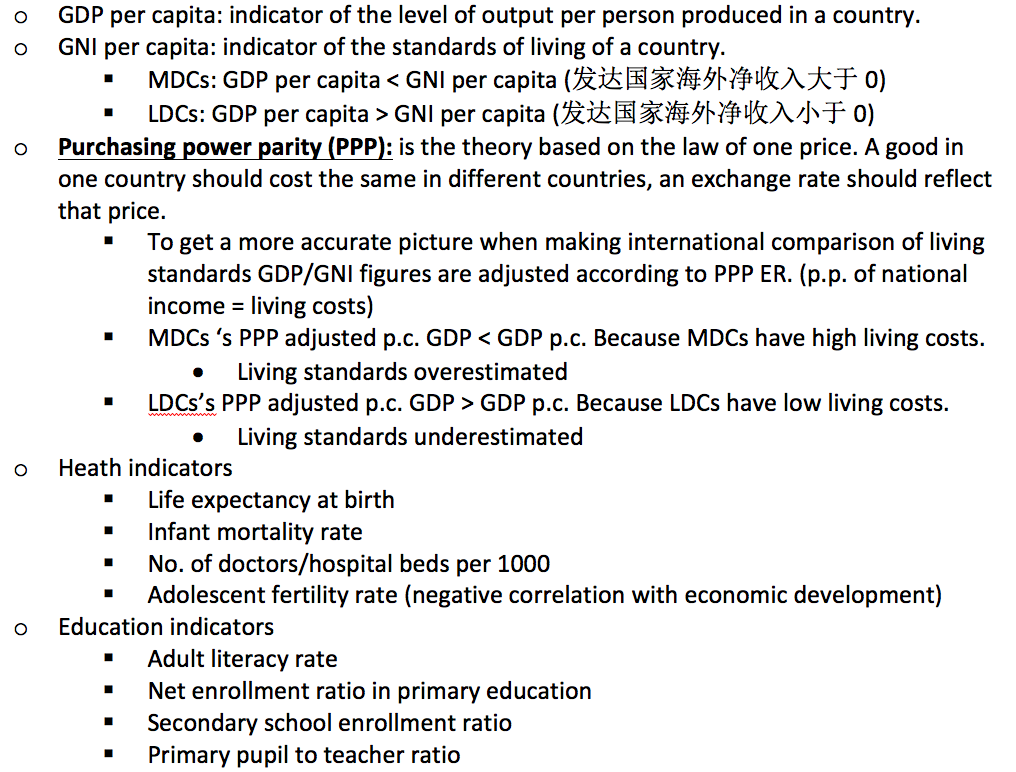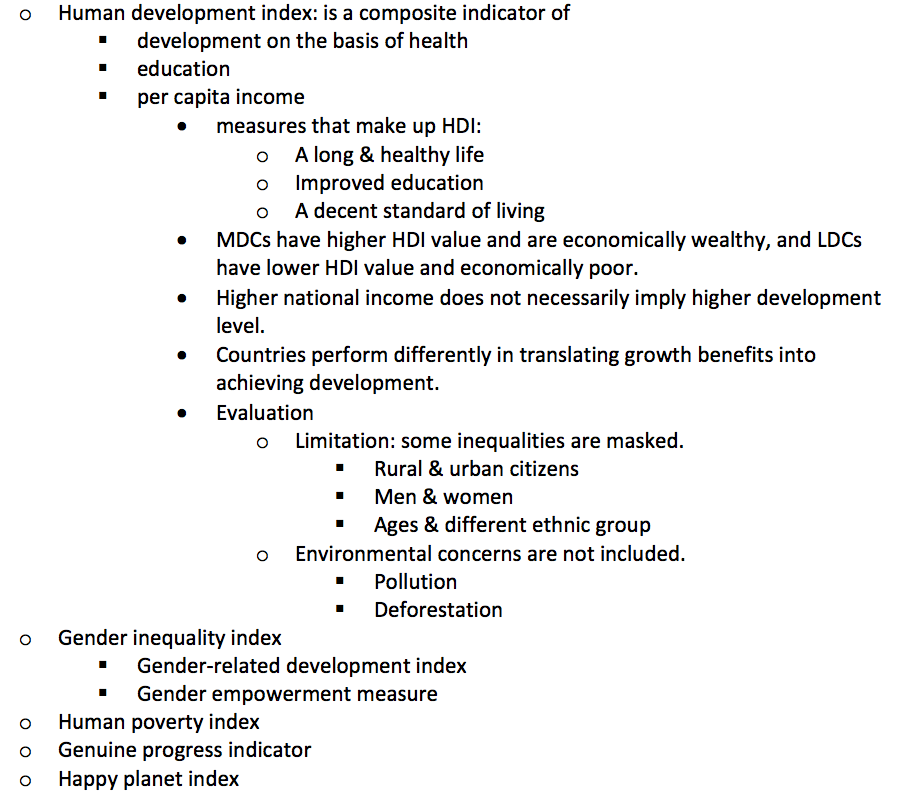Economic development
An improvement in economic welfare. It is wider than economic growth and involves, for instance:
- a reduction in poverty
- increased life expectancies
- a greater range of economic and social choice
- health and education
- environmental protection and per capita income.
Short-run growth
Increase in actual output (AD curve shift rightward, point move toward PPC frontier)
Factors of influence:
- consumption
- investment
- government spending
- net export
Long-run growth
Increase in potential output (long run AS curve, PPC curve expand outward)
Factors of influence: quantity and quality of FOP
Sustainable development
Development that meets the needs of the present without compromising the ability of future generations to meet their own needs”. It implies development that does not result in environmental degradation.
Millennium Development Goals
- Eradicate extreme poverty & hunger
- Achieve universal primary education
- Promote gender equality & empower women
- Reduce child mortality rate
- Improve maternal health
- Combat HIV/AIDS, malaria, & other diseases
- Ensure environmental sustainability
- Develop a global partnership for development
Economic growth and Economic development
Economic growth is often but not always associated with economic development. A country may experience economic growth but if it is accompanied by more pollution, longer working hours and worse working conditions, it may not experience economic development.
- Higher output can lead to more employment which can move people out of absolute poverty.
- Increases in the quantity and quality of housing may increase life expectancy
- Some of the increase in tax revenue can be spent on education and health care
It is possible that economic development may occur without economic growth.
- Whilst income may not increase, a more even distribution of income may promote economic development.
- Greater political freedom will give people more choices.
- Reducing any tensions with other countries may give people a greater sense of security.
Rise in the quantity of merit goods will result in economic development. Rise in quantity of industrial goods will result in economic growth.
Income indicators
- Single indicators

- Composite indicators: which are summary measures of more than one dimension of development.

Economic structure
- Primary sector
inelastic of demand + price fluctuate
Developing countries tends to show a great reliance upon the export of primary produce
- Secondary sector
- Tertiary sector
Most developing countries have high rate of
- population growth
- high fertility rates
- high dependency ratio

No Comments